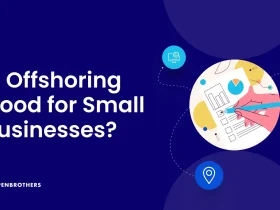Evaluating whether it is possible to protect institutions from illicit activities is most important at present. The AML (Anti-Money Laundering) watchlist screening is a preventive technique that enables agencies to avoid exposure to risks such as money laundering and terrorism financing. And how does this process help protect the financial institutions, and why is it relevant?
In this article, we will see how the use of AML watchlist screening functions as a shield for various financial institutions.
What is the need for AML Watchlist Screening?
The AML watch list screening helps minimize the risks and adhere to international standards in the financial operations of a business. It assists financial institutions in identifying timely and potential threats to prevent any unlawful activities and transactions from taking place. Due to the guidelines from global bodies like the FATF, the institutions involved have to embrace sound watchlist monitoring systems. Without this, serious consequences include fines and adverse impact on the institution’s reputation.
The AML Watchlist Screening Process
Watchlist checks entail one of the first screening processes in an AML regime that seeks to identify and block any individuals. Some of these lists may contain the names of clients and other related information compared with banned business entities and known criminals, terrorists, and others. This is important to prevent facilitating any business by or with any of the prohibited persons through the institution. Over 50 such international sanctions lists already exist as of 2024 from the EU, OFAC, and the UN alone, and global screening is an important part of AML compliance.
Real-Time Screening and Monitoring
Real-time screening, as well as continuous watchlist monitoring, is an essential aspect of the AML watchlist screening process. It implies that every transaction or any activity has been analyzed altogether, and an immediate review happens in case of a match to a watchlist. This makes the process real-time in nature, so any suspicious activities are flagged and stopped before they proceed, minimizing the risk of financial crimes.
Global Watchlist Screening
The necessity of global watchlist screening is increasing with the globalization of financial markets. To check them, they also have to run against international databases, including those run by organizations such as the United Nations, the EU, or any national regulatory authorities. This means that transactions and clients are checked not uniquely but from a local to a global perspective. Global watchlist screening is more protective of preventing cross-border money laundering and terrorism financing than global screening, but it costs much more.
Transaction Monitoring
By providing an extra layer of security, transaction monitoring altogether goes hand in hand with AML watchlist screening. Financial institutions can review every financial transaction, which allows the tracking of patterns that indicate illegal activity, such as large sums being transferred from high-risk jurisdictions. When unusual behavior is detected, the alerts are triggered to give institutions a quick response.
How Does Watchlist Screening Protect Financial Institutions?
Risk mitigation is the main value of the AML watchlist screening process. It helps financial institutions identify and block high-risk individuals and entities before they can execute any illicit transactions. Institutions restrict criminals’ and terrorists’ use of their financial services to minimize their risks of being engaged in economic crimes. So, this early intervention significantly decreases the risk of paying hefty fines, regulatory scrutiny, and severe damage to the reputation. AML watchlist screening helps ensure that a financial institution operates in a clean, compliant way. For each year, the World Economic Forum estimates that financial institutions fined an average of $200 million a year for non-compliance to AML regulations.
Regulatory Compliance
Among financial institutions, one of the biggest challenges is the global and local regulations that need to be obeyed. AML watchlist screening is an important task to ensure compliance with the anti-money laundering laws. To meet the legal requirements, institutions should keep checking their customers, as well as any transactions they process, to see if they appear on any sanctioned lists. Apart from ensuring the smooth operation of financial institutions, compliance also protects them from very costly sanctions such as large fines and restrictions. An institution that tends to adhere to effective AML procedures is less prone to landing in trouble with regulatory bodies and incurring extra costs.
Fraud Prevention
AML watchlist screening also acts as a useful tool to combat fraud prevention. Financial institutions can prevent unauthorized or fraudulent transactions by screening against known fraudsters, terrorists, and criminals. AML watchlist screening makes sure this happens to keep such activities from proceeding so that institutions can quickly take corrective action, such as freezing accounts or halting payments. Not only does it help financial institutions refrain from financial and reputational losses, but it also ensures that financial institutions work within the legal framework to protect global economic systems.







Leave a Reply